Description and treatment of honeysuckle diseases and pest control
Honeysuckle diseases are increasingly attacking plants in gardens across the country. This is due to the growing popularity of the bush. Infections enter the site along with planting material and are spread by insects and weeds. Weather conditions are of no small importance.
Diseases affecting crops are effectively treated only in the early stages of development. Therefore, it is important to learn how to determine what ails honeysuckle, how to prevent infections and treat them. Read more about this.
Honeysuckle diseases: description and treatment
There are many diseases of honeysuckle. They have different symptoms, causes and pathogens.. Treatment will also vary for different diseases.
If honeysuckle plantings have acquired an unusual appearance, become more lethargic, or show signs of delayed development, this indicates illness. It is important to determine what kind of infection has affected the plant, and only then use the drugs.
Rust
Rust - fungal disease. Infected plants lose their yield, lose their leaves, and tolerate cold weather worse.
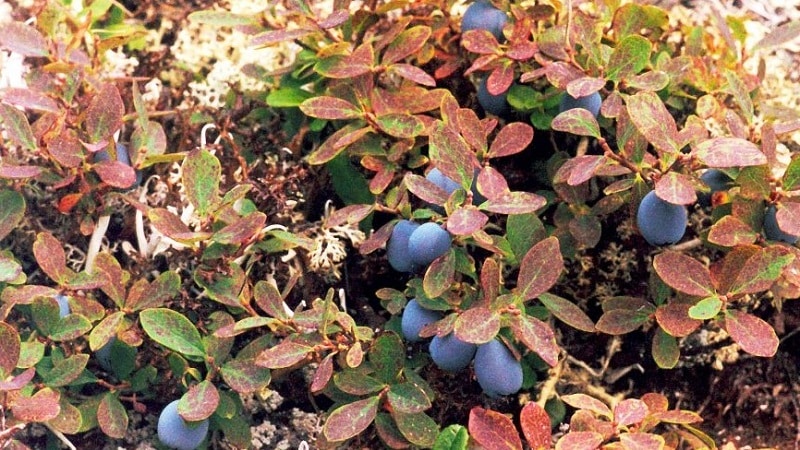
Convex red spots appear on diseased plants. When the pustules crack, rusty powder spills out. These are fungal spores.
They are stored in plant residues, so the latter must be collected and burned in the fall. The risk of infection increases significantly when honeysuckle grows near pine forests.
Fungicides and products containing copper are used to treat rust on honeysuckle.. Before processing, diseased leaves are torn off.
Powdery mildew
Powdery mildew – the most common honeysuckle disease. The leaves are covered with white velvety spots, which over time blur and cover the entire plate. Then they acquire a brown tint. Spots also appear on stems, berries and inflorescences.
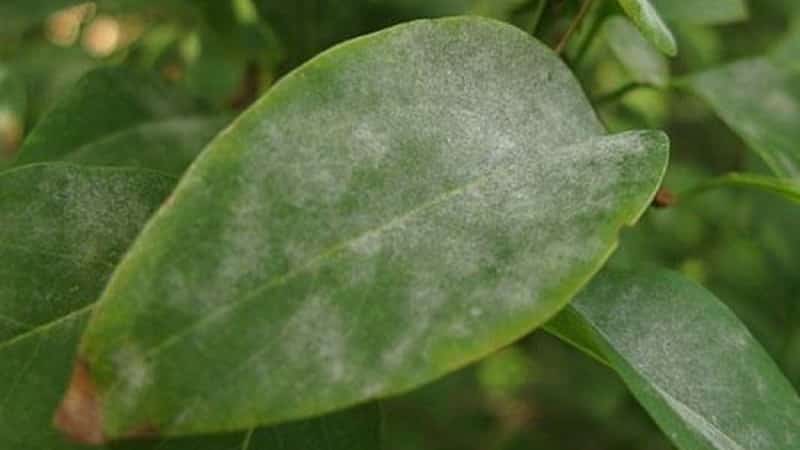
Without treatment, the greens shrink and dry out, the fruits fall off. The bush does not grow and becomes more sensitive to cold weather. The chances of it successfully surviving the winter are reduced.
Powdery mildew is caused by a fungal infection. It is carried by insects, the wind, and ends up in the area with planting material. Spores lie dormant in the soil for a long time until they are activated:
- moisture stagnation;
- rare watering;
- low temperatures (+15…+25°С);
- partial or complete shading;
- temperature fluctuations.
How get rid of powdery mildew on fruit and ornamental plants (Honeysuckle) honeysuckle:
- Application of fungicides - the most effective way. Despite this, many gardeners try not to resort to it, since the drugs accumulate in the berries. Fungicides include drugs such as Vectra, Cumulus, etc.
- Antifungal agents. They are less dangerous to human health and do not accumulate in fruits, but they are also less effective. The most popular antifungal agents are a solution of copper sulfate (1 tablespoon per bucket of water), a light pink solution of potassium permanganate, and “Fitosporin.”
- Folk remedies. This is the most harmless method of combating the disease, but it is effective at the early stage of infection. An iodine-milk solution is used.To prepare it, take 2 liters of milk and 30 drops of iodine in a bucket of water. The rest of the volume is added with water.
When treating powdery mildew, first remove all affected parts of the plant.. The cut areas are sprinkled with ash. Infected plant material is burned. After this, the plants are sprayed with the drug, continuing treatment until the disease disappears.
Prevention is considered planting honeysuckle in a well-lit area, processing planting material, spring pruning, timely watering, loosening the soil. Don't forget about preventative treatment. To do this, the bush is sprayed with a solution of potassium permanganate from July to September, and the soil around is watered with boiling water.
Important! In order for a sick plant to survive the winter, it is mulched and covered with spunbond.
Chlorosis
Chlorosis is one of the most common diseases. There are many reasons for its occurrence:
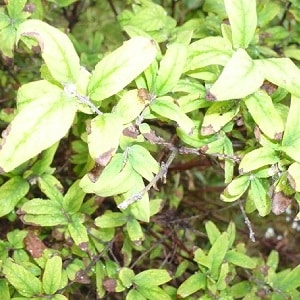 fungi;
fungi;- bacteria;
- viruses;
- lack of microelements;
- heredity.
Chlorosis is expressed in the blanching of the leaves. White spots and stripes appear on the affected plates. This leads to shredding of leaf blades and stopping the development of plants due to deterioration of photosynthesis.
To prevent disease in the spring, disinfect the soil around the honeysuckle with boiling water, copper sulfate or fungicides. Attention is paid to observing the fertilizing schedule, destroying pests, and disinfecting garden tools.
To get rid of the disease, add complex nutrition containing iron and various minerals. If new leaves without signs of disease do not begin to appear, the plant is treated with antifungal agents.
It can be useful:
Stages of caring for honeysuckle in the fall to prepare for winter
Cercospora
Why do honeysuckle leaves turn black? This symptom is the main sign of cercospora. This the disease is dangerous because it leads to drying out and curling of the leaves. It occurs when honeysuckle is infected with a fungal infection.
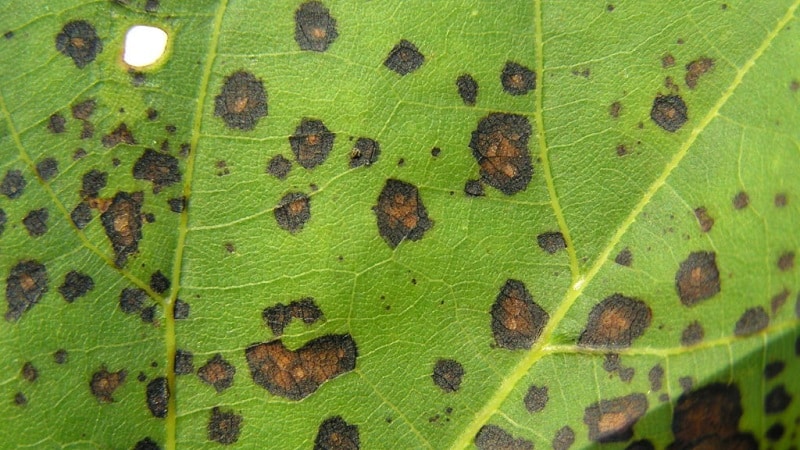
With cercospora blight, honeysuckle leaves become covered with small round spots. At first they have an olive tint, but over time they acquire a gray-green or brown color. In humid weather, a black rash appears on the back of the leaf blade - these are spores of the causative agent of the disease. They are found in the soil and infect the plant in the spring, when factors such as cold snaps, temperature changes, and high humidity are pronounced.
On the site, the disease is spread by insects, contaminated planting material, and weeds.. To prevent cercospora blight, honeysuckle is sprayed with copper sulfate in early spring. It is important to remove fallen leaves and plant debris in the fall, and in the spring and summer to weed and mulch the soil around the plant.
If the infection has already affected honeysuckle, fight it in the following ways::
- spray the plants with Bordeaux mixture;
- treat the bushes with a soap-copper solution (to prepare it, dissolve 1 tablespoon of copper sulfate and 1 piece of grated laundry soap in a bucket of water);
- use "Fundazol".
Before processing the plantings, remove all affected leaves.. Plants are sprayed weekly until signs of the disease disappear.
Advice. It is recommended to do any treatment of plants in dry weather, in the morning or evening, when the sun is not active.
Ramulariasis
Ramulariasis, or white spotting is another possible answer to the question of what causes honeysuckle. The causative agent of the disease is a fungus. If left untreated, it leads to leaves falling from the plant, weakening of the root system and death of the plant.
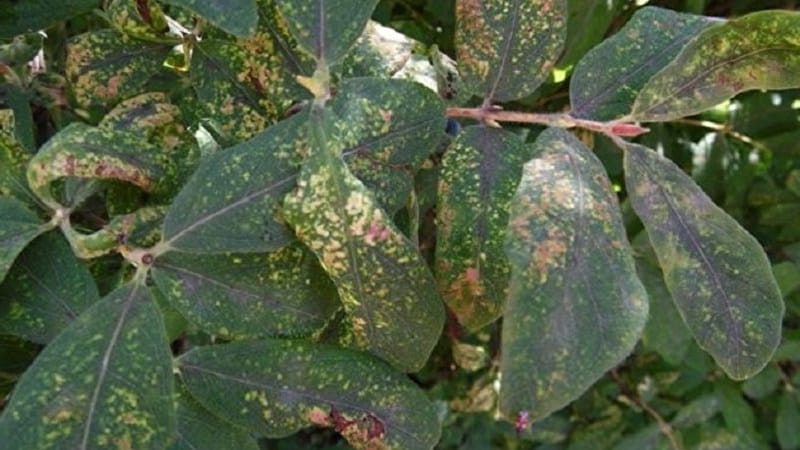
The first symptoms appear in early spring. The disease is recognized by the following signs:
- grayish-brown uneven spots with white marks in the center appear on the leaves;
- gradually the spots grow and become covered with whitish powder;
- the infection spreads to petioles, stems and pericarps.
The fungus overwinters in the soil on plant debris. Its development is activated by high humidity and low temperatures.
The main methods of prevention are considered treating the soil around plants with copper sulfate or potassium permanganate, removing plant residues in the garden in the fall, maintaining a watering schedule, loosening the soil.
Treatment of the plant is as follows:
- Spraying preparations with copper-containing preparations. Usually a solution of copper sulfate is used (1 tbsp per bucket of water).
- Fungicide treatment "Fundazol". It is used if other means do not help.
- Folk remedies. An effective solution is prepared from 2 kg of ash, 1 piece of laundry soap and 1 bucket of water. It is infused for 2 days.
Treatment is carried out in dry weather. Before this, all affected leaves are torn off the honeysuckle.
Blackening of shoots
Blackening of shoots is a common disease. It leads to drying out of leaves and branches. Reduces plant frost resistance. The disease is caused by a parasitic fungus.
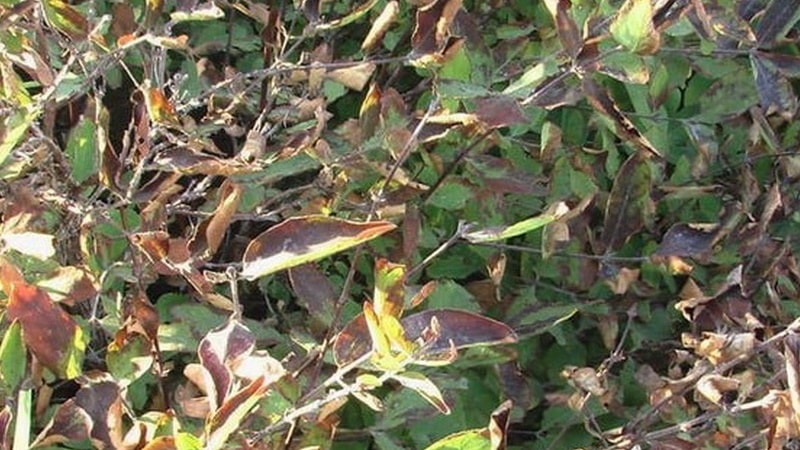
Symptoms of blackening of shoots:
- a black soot-like coating appears on the leaf blades and shoots;
- the leaves dry out and curl into a tube;
The fungus attacks plants with weakened immune systems.. To prevent infection, honeysuckle provides timely watering and fertilizing. In the spring, sanitary pruning is required, removing dry stems.
To cure the disease, the affected stems are removed. They are taken away from the site and burned. The cut areas are treated with garden varnish. The plant is sprayed with antifungal drugs containing copper.
Read also:
Cancer
European cancer is caused by a fungal infection. It gets into damage on the branches and shoots of honeysuckle. Leads to leaf fall and branches drying out.
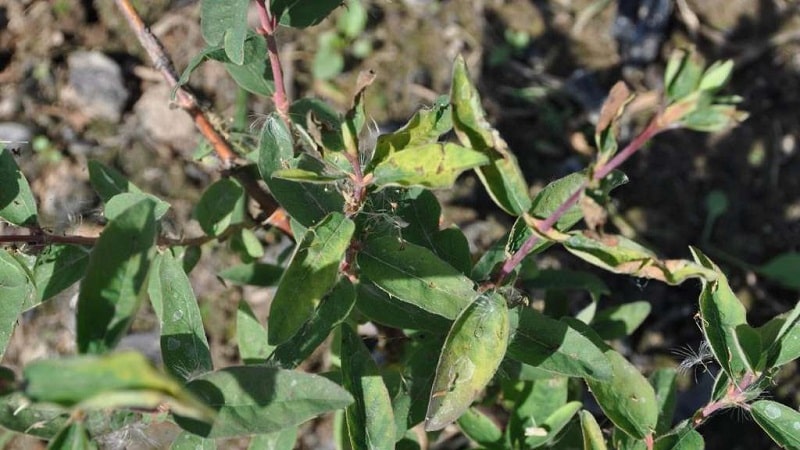
Symptoms of cancer:
- leaves on honeysuckle become brown and limp;
- grayish spots appear on the tops of branches and shoots;
- in the center of the formations on the shoots, brown or dark gray moist sores with black hairs are noticeable.
The disease often develops in regions with warm climates. The highest risk of infection is with high humidity and stagnant fluid.
To reduce the risk of honeysuckle infection, it is important follow the rules of watering, loosen the soil and mulch it, and remove and burn the affected shoots.
Tuberculariosis
Tuberculosis is the main reason why honeysuckle leaves turn red. He leads to drying out of not only the leaves, but also the branches of the plant. Without timely treatment, the bush dies. The causative agent of the disease is a fungus.
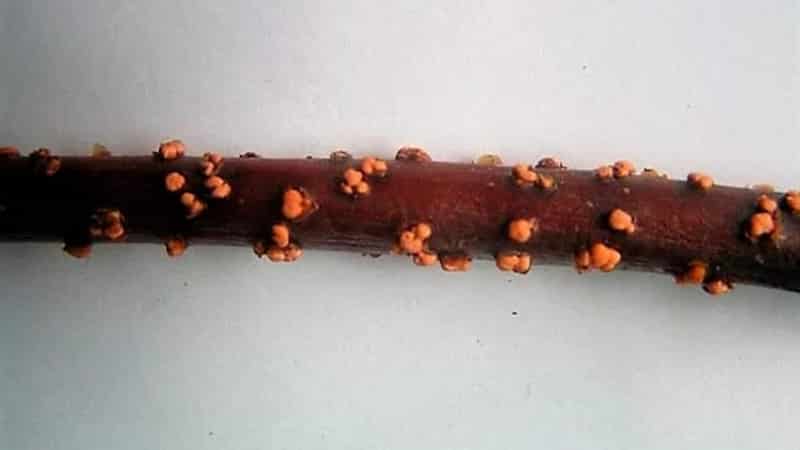
Symptoms of tuberculiosis:
- red tubercles form on the shoots;
- the infection affects neighboring branches and penetrates the plant bark, manifesting itself as red tubercles;
- in July, honeysuckle leaves and shoots curl and dry out.
The fungus is present in the bark of the plant in the form of mycelium and fruiting bodies.. The cycle of infection of new branches is repeated constantly.
For prevention, plants are sprayed in early spring preparations containing copper (copper oxychloride, Bordeaux mixture). Be sure to carry out sanitary pruning.
If the plant is sick, the affected branches are removed and burned. The cut areas are treated with ash or garden varnish. To prevent the spread of the disease, plants are sprayed with copper products.
Leaf spot
Leaf spotting - a fungal infection that attacks honeysuckle in the summer. It leads to premature falling of leaves and fruits and impaired photosynthesis.
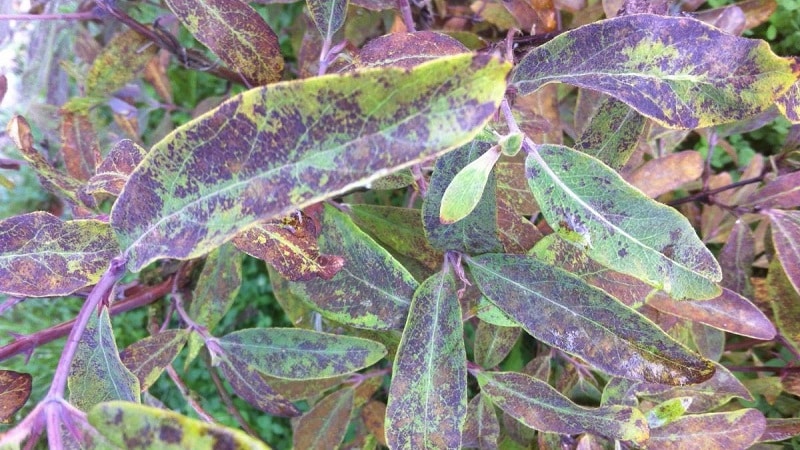
Leaf spotting is recognized by the following signs::
- orange or yellow spots with bright red borders form on both sides of the leaf blade;
- a group of black dots appears in the central part of the spots;
- the spots darken and acquire a brown tint;
- greens from edible and decorative honeysuckle fall off prematurely.
The fungus overwinters on withered branches and fallen leaves. To prevent the development of spotting, preventative pruning is carried out in the spring, and fallen leaves are removed and burned in the fall.
The following remedies are used to combat the disease::
- "Mancozeb";
- copper oxychloride;
- Bordeaux mixture.
Before processing the affected greenery is torn off and burned.
Mosaic
Rezuha mosaic – viral disease spread by nematodes. It appears bushy on young shortened cuttings. The affected branches are distinguished by shortened internodes, awakened air buds, and many new shoots. Diseased leaves become underdeveloped and become smaller, which leads to gradual drying out of plants.
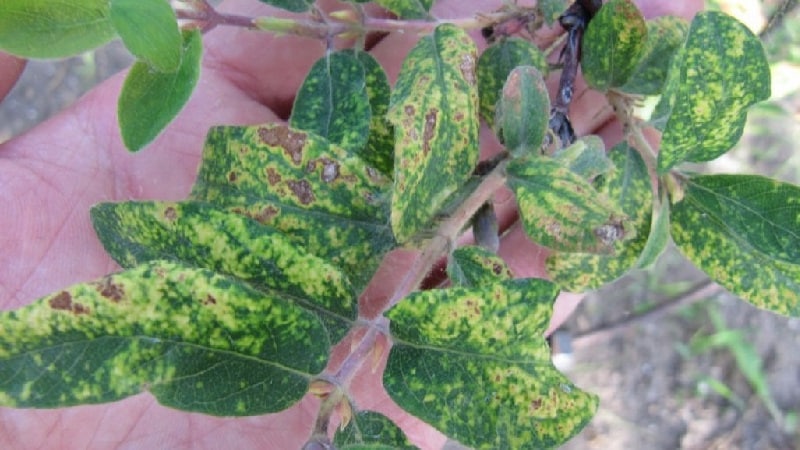
Viral diseases cannot be cured. All that can be done for a sick plant is to trim off the diseased branches.
Attention! The best prevention of viral diseases is considered to be the choice of honeysuckle varieties that have immunity.
Leaf mottling
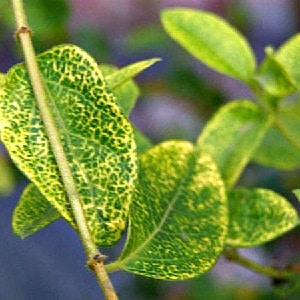 Leaf mottling - another viral disease spread by nematodes. Arched spots and brown streaks appear on the leaves of affected plants. The greens turn yellow. This leads to the death of plants.
Leaf mottling - another viral disease spread by nematodes. Arched spots and brown streaks appear on the leaves of affected plants. The greens turn yellow. This leads to the death of plants.
What to do if characteristic brown spots appear on honeysuckle leaves? Infected branches are pruned. If the disease has managed to affect the entire bush, it is dug up completely to prevent the infection from spreading to neighboring plants.
To prevent the disease, sanitary pruning is carried out in the spring.. It is equally important to follow the fertilizer application schedule.
Honeysuckle pests
Pests are no less dangerous than diseases. They feed on leaves, juice and fruits of plants. Many insects carry infections.
Who eats honeysuckle:
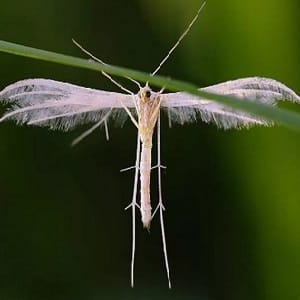 Honeysuckle fingerwing (photo on the right). The pest caterpillar lives in honeysuckle fruits, feeding on their pulp and seeds. To combat fingerfly, the drug “Eleksar” is used.
Honeysuckle fingerwing (photo on the right). The pest caterpillar lives in honeysuckle fruits, feeding on their pulp and seeds. To combat fingerfly, the drug “Eleksar” is used.- Mite. The web on honeysuckle is the main sign of pest damage to the plant. The ticks themselves are small, four-legged, and brown in color. They feed on plant sap. When infected with mites, the leaves turn red, wither and dry out. To combat the pest, use the drug “Firoverm” or a decoction of dandelions.
- Aphid. Small light green flies feed on the sap of leaves. This leads to their withering and drying out. They fight aphids using folk remedies (wormwood decoction, soap solution) or purchased drugs, for example, Fufanon.
- Shields. They feed on the juice of shoots.The pest larvae hatch from eggs in the spring and crawl along the tree trunk. Later they lose mobility, become covered with a hard shell and remain under it for the rest of their lives. 1.5-2 months after the formation of the shield, the pest lays larvae, which remain under the shell, feeding on the sap of the plant. Scale insects often cause the death of honeysuckle. For the prevention and control of pests, special preparations are used, for example, “Rogor”.
- Striped sawfly. The gray-green caterpillar with black dots on its back feeds on leaves, gnawing holes in them. To get rid of the pest, the plant is sprayed with Decis.
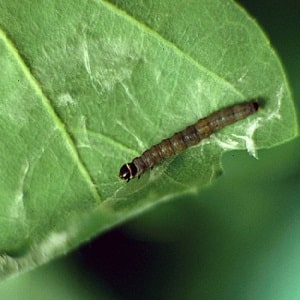 leaf roller (photo on the right). Caterpillars of leaf roller butterflies feed on young leaves and buds of plants. To control pests, the drug “Kemifos” is used.
leaf roller (photo on the right). Caterpillars of leaf roller butterflies feed on young leaves and buds of plants. To control pests, the drug “Kemifos” is used.- Leaf miner. The insect resembles a small fly with a yellow body and dark transparent wings. The pest gnaws holes in the leaves, feeding on the sap. Dry brown stripes form on the leaf blades. The pest leads to premature leaf fall and deterioration of the decorative value of honeysuckle. To combat it, the drug “Eleksar” is used.
- Moth. Long green caterpillars feed on leaves. They settle on the inside of the leaf blade in transparent oval-shaped film mines. Moth attacks lead to drying and curling of leaves, as well as their premature fall. To eliminate the pest, honeysuckle is sprayed with Fufanon in spring and late summer.
Conclusion
In most cases, unnatural changes in the leaves or branches of honeysuckle indicate it is affected by diseases or pests.Before you start using commercial drugs, you should correctly identify the disease by comparing its signs with the described symptoms.
Treatment of many diseases is problematic. Products used to control infection often reduce the environmental friendliness of the crop. Therefore, it is important to follow the rules of prevention to prevent infection.